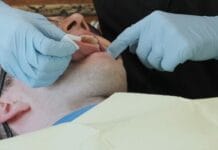The human body is a scientific masterpiece with multiple biological functions. However, proper function and maintenance are required to keep it working like a well-oiled machine. This includes adequate intake of certain minerals such as iron, calcium, and zinc.
Iron is an essential mineral that the human body requires for multiple functions. Iron deficiency can cause gastrointestinal (GI) upset, weakness, fatigue, and brain fog. Iron deficiency can also inhibit the immune response to microbes. Conversely, chronic inflammation from microbial infections can contribute to iron deficiency.1
Children, adults, and adolescents of all sexes are at risk for iron-deficient anemia, with biological women and teens having the highest incidence. This is due to both pregnancy and menstruation. Overall, the statistics in the U.S. are 1% of men over 50, 10% of women of childbearing age, 6% of females aged 12 to 21, and 9% of children aged 12 to 36 months have iron-deficient anemia.2,3
Additional conditions or circumstances that can cause iron-deficient anemia include chronic infections and/or inflammation, frequent blood donations, vegetarianism, cancer, GI disorders, and heart failure.1
Causes of Iron-Deficient Anemia
Individuals may acquire iron-deficient anemia via multiple mechanisms. No matter the mechanism, the effect on oral health remains the same. Nonetheless, let’s explore some of the mechanisms of action that lead to iron-deficient anemia in certain conditions.
Menstruation and Blood Donation
Women of childbearing age are at an increased risk of developing iron-deficient anemia. Even in the absence of iron-deficient anemia, many women of childbearing age are iron-deficient. A study found that the overall prevalence of iron deficiency was 38.6%, while the overall prevalence of iron-deficient anemia was 6.3% in females aged 12 to 21 years.3
This study indicates that even in the absence of the diagnosis of iron-deficient anemia, women in this age range may still be deficient. When bleeding occurs, it results in the loss of iron from the body. Significant blood loss can deplete the body’s iron reserves, potentially leading to low iron levels and ultimately resulting in iron deficiency. In cases where iron deficiency becomes severe and hampers the production of red blood cells, it can progress to iron-deficient anemia.4
This is the same mechanism by which frequent blood donation can cause iron deficiency and iron-deficient anemia. Most organizations that take blood donations have guidelines for how often blood can be donated to prevent iron deficiency or iron-deficient anemia.5
Infants and Toddlers
Iron-deficient anemia can be very concerning in infants and toddlers, as proper iron levels are necessary for growth and development. Iron-deficient anemia can lead to psychological and physical developmental delays.1
This can occur through a lack of adequate nutrient intake, especially in infants who are exclusively breastfed beyond six to nine months. Full-term infants need iron-enriched solid foods or drink iron-enriched formula starting around six to nine months to ensure they obtain the appropriate amounts of iron in their diet.1
Additionally, excessive consumption of cow’s milk can contribute to iron deficiency in toddlers. To help prevent iron deficiency or iron-deficient anemia, children aged one to five should not consume more than 16 ounces of cow’s milk daily.6
Vegetarians and Vegans
Though many people associate plant-based diets with healthfulness, eliminating an entire food group rather than having a well-balanced diet can contribute to certain macro and micronutrient deficiencies. This has been well established in individuals who adopt a vegetarian or vegan diet. Vegetarians and vegans should pay attention to ensure they are getting adequate calcium, zinc, and vitamin B12 and D in addition to iron.7
Iron is primarily obtained from dietary sources, with absorption occurring mainly in the intestines. There are two forms of dietary iron: heme and non-heme iron.
Heme iron, derived from animal sources like meat, poultry, and fish, is easily absorbed. Non-heme iron is found in plant foods. It is less absorbable because compounds like phytate, oxalate, polyphenols, and tannin present in plants inhibit iron absorption. Therefore, vegetarians and vegans are at higher risk of becoming iron-deficient and developing iron-deficient anemia.8
Anemia of Chronic Inflammation, Infection, and Disease
Chronic infections, inflammation, and diseases can cause iron-deficient anemia. However, anemia of chronic infection, inflammation, or disease is not the same as the previously mentioned iron-deficient anemia.
The primary function of the reticuloendothelial system is to perform phagocytosis of foreign materials and particles. It plays an important role in the regulation of the immune system.9 Anemia of chronic infection, inflammation, and disease involves significant disruption in iron balance due to a blockage in reticuloendothelial function via the sequestering of iron by the protein lactoferrin rather than a genuine lack of iron.10
This is an important aspect to understand for dental professionals as periodontal disease, periapical abscesses, and dental caries are infections that could contribute to anemia of chronic inflammation, infection, or disease. Additionally, this type of iron-deficient anemia is not successfully treated with supplements or dietary changes. Treatment requires managing the underlying disease and/or infection/inflammation.1
Chronic disease, inflammation, and infections alter the body’s ability to utilize stored iron.1 The primary player in this biological mechanism is lactoferrin. Lactoferrin is an iron-binding glycoprotein that bridges innate and adaptive immune function in mammals.11
For instance, during a bacterial infection, lactoferrin sequesters iron and stores it within macrophages. This function is to prevent bacteria from using free iron as a nutrient. The purpose of this mechanism is to eliminate the bacteria through nutrient deficiency.12
As you are likely aware, bacteria that cause periodontal disease tend to cause chronic inflammation and/or infections that are only managed through proper periodontal therapy. Other systemic diseases can also contribute to this function and interfere with the proper oxygenation of the oral tissues, inhibiting the growth and differentiation of cells.13
Moreover, anemia of chronic disease or infection and iron-deficient anemia are the leading causes of anemia. In dentistry, these types of anemia hold significance because dental examinations may identify oral manifestations before more noticeable systemic signs of anemia emerge clinically. Numerous clinical and experimental studies have identified mechanisms associated with oral changes in patients with anemia of chronic disease or iron-deficient anemia.13
The dental professional’s role in understanding the mechanism and clinical signs of anemia of chronic disease or infection and iron-deficient anemia is paramount in managing both oral manifestations as well as systemic manifestations. Treating and managing periodontal disease is an important factor in reducing inflammation and infection, thereby allowing sequestered iron to be redistributed for proper biological functions.10,13
Effects of Iron-Deficient Anemia on Oral Health
Identifying clinical oral signs and symptoms in patients with suspected iron deficiency is key to getting them referred for proper bloodwork and follow-up care.
Angular Cheilitis, Glossitis, and Burning Mouth
Angular cheilitis is an inflammatory condition often induced by nutritional deficiencies. An estimated 25% of angular cheilitis cases are from nutritional deficiencies, including iron and B vitamins. It can also occur due to infections such as Candida albacans or Staphylococcus aureus and, in some cases, allergic contact dermatitis.14
Though atrophic glossitis is associated with multifactorial etiologies, nutritional deficiencies are indeed one of the factors. Atrophic glossitis is characterized by epithelial atrophy and varying degrees of chronic inflammation. Iron is an important factor in epithelial maturation, and a deficiency can affect various epithelial structures, including the tongue.15
Secondary burning mouth syndrome is associated with nutritional deficiencies. It is important to recognize that primary burning mouth syndrome is believed to be due to nerve damage, not other factors such as nutritional deficiencies. However, secondary burning mouth syndrome is associated with nutritional deficiencies, including B vitamins and iron.16
Periodontal Disease
Iron deficiency increases the risk of developing periodontal disease. As previously mentioned, bacteria utilize iron for nutrition. In the absence of iron, microbes, including commensal microbes, are often starved. This can and frequently does cause a shift in the oral microbiome, creating an environment that supports pathogenic rather than commensal bacteria, leading to an increased risk of developing periodontal disease.17
In one case report, the patient exhibited widespread bone loss and tooth mobility despite maintaining good oral hygiene. There was no presence of excessive biofilm or calculus. The patient required the extraction of eight teeth due to mobility. A comprehensive medical examination indicated severe anemia. After addressing the anemia, both oral and overall health showed significant improvement.18
Dental Caries
Studies have indicated that iron is one of the trace elements in the hydroxyapatite of enamel. Therefore, iron deficiency can and often does increase caries risk. Studies have shown iron deficiency is associated with early childhood caries.18,19
Iron deficiency in children can also affect the developing teeth and lead to enamel defects, increasing caries risk. Some studies suggest low iron levels reduce saliva buffering capacity, another mechanism by which iron deficiency may contribute to increased caries risk.18
Experimental studies have confirmed that adding iron to cariogenic foods can lower the incidence of dental caries in both animals and humans. This effect is attributed to iron’s strong inhibition of the glucosyltransferase enzyme (GTF) and its role in remineralizing enamel.18
Research has shown that iron can form protective layers on the enamel surface. Iron ions deposit on the enamel, creating an acid-resistant thin coating of hydrated iron oxide gels and crystals. This coating absorbs salivary calcium and phosphates, facilitating the nucleation of apatites and the replacement of minerals during the acidic phase of tooth decay. This mechanism is also associated with black line stain.18
In Closing
Dental hygienists play an intricate role in screening for systemic conditions. Understanding the association between systemic conditions and oral health, as well as oral manifestations of nutritional deficiencies that contribute to increased risk of oral diseases, is paramount in managing oral health.
Iron deficiency and iron-deficient anemia are more common than previously thought and may play an important role in oral diseases. Overlooking patients’ nutritional status can impede healing and frustrate patients when home care isn’t enough to improve oral health.
I want to caution against arbitrarily recommending supplements. Not only are over-the-counter supplements not regulated, but you may also recommend an unnecessary supplement, which has the potential to do more harm than good. Without a blood test, there is no way to determine what, if any, supplements are needed.
Additionally, anemia of chronic inflammation, disease, and/or inflammation is not caused by a deficiency but rather is associated with iron being sequestered. Therefore, a supplement will be of no use in correcting this condition.
The better we understand the biological functions of the human body, the better care we can provide for our patients. Please ensure you are considering the nutritional status of your patients when managing oral disease processes. However, while nutritional counseling is certainly in our wheelhouse, arbitrarily recommending supplements is not.
Interdisciplinary collaboration has never been more important. We now know there is an oral-systemic association that cannot and should not be ignored. If you have patients at high risk of caries, periodontal disease, or any other oral manifestation associated with iron-deficient anemia, please consider referring the patient to their primary care physician for blood tests to eliminate the possibility of a nutritional deficiency as a possible contributing factor.
Before you leave, check out the Today’s RDH self-study CE courses. All courses are peer-reviewed and non-sponsored to focus solely on high-quality education. Click here now.
Listen to the Today’s RDH Dental Hygiene Podcast Below:
References
- Iron. (2023, August 17). NIH: Office of Dietary Supplements. https://ods.od.nih.gov/factsheets/Iron-Consumer/
- Warner, M.J., Kamran, M.T. (2023, August 7). Iron Deficiency Anemia. StatPearls. https://www.ncbi.nlm.nih.gov/books/NBK448065/
- Weyand, A.C.,Chaitoff, A.,Freed, G.L., et al. Prevalence of Iron Deficiency and Iron-Deficiency Anemia in US Females Aged 12-21 Years, 2003-2020. JAMA. 2023; 329(24): 2191-2193. https://doi.org/10.1001/jama.2023.8020
- Mansour, D., Hofmann, A., Gemzell-Danielsson, K. A Review of Clinical Guidelines on the Management of Iron Deficiency and Iron-Deficiency Anemia in Women with Heavy Menstrual Bleeding. Adv Ther. 2021; 38(1): 201-225. https://doi.org/10.1007/s12325-020-01564-y
- Frequently Asked Questions: Blood Donation Process. (n.d.) American Red Cross. https://www.redcrossblood.org/faq.html
- Iron-Deficiency Anemia Related to Milk Consumption. (n.d.) Nationwide Children’s Hospital. https://www.nationwidechildrens.org/-/media/nch/for-medical-professionals/practice-tools-new/iron-deficiency-anemia-related-to-milk-consumption.ashx
- Austin, K. J. (2020). Nutritional Counseling. In D. M. Bowen & J. A. Pieren, Darby and Walsh Dental Hygiene: Theory and Practice (5th ed., pp. 556-567). Elsevier.
- Kumar, A., Sharma, E., Marley, A., et al. Iron Deficiency Anaemia: Pathophysiology, Assessment, Practical Management. BMJ Open Gastroenterol. 2022; 9(1): e000759. https://doi.org/10.1136/bmjgast-2021-000759
- Reticuloendothelial System. (2022). In M. O’Toole (ed.), Mosby’s Medical Dictionary (11th ed., pp. 1568). Elsevier.
- Lu, S.Y., Eng, H.L. Dramatic Recovery from Severe Anemia by Resolution of Severe Periodontitis. Journal of Dental Sciences. 2010; 5(1): 41-46. https://www.sciencedirect.com/science/article/pii/S1991790210600074
- Actor, J.K., Hwang, S.A., Kruzel, M.L. Lactoferrin as a Natural Immune Modulator. Curr Pharm Des. 2009; 15(17): 1956-1973. https://www.ncbi.nlm.nih.gov/pmc/articles/PMC2915836/
- Drago-Serrano, M.E., Campos-Rodríguez, R., Carrero, J.C., De la Garza, M. Lactoferrin: Balancing Ups and Downs of Inflammation Due to Microbial Infections. International Journal of Molecular Sciences. 2017; 18(3): 501. https://doi.org/10.3390/ijms18030501
- Hatipoglu, H., Hatipoglu, M.G., Cagirankaya, L.B., Caglayan, F. Severe Periodontal Destruction in a Patient with Advanced Anemia: A Case Report. Eur J Dent. 2012; 6(1): 95-100. https://www.ncbi.nlm.nih.gov/pmc/articles/PMC3252802/
- Ayesh, M.H. Angular Cheilitis Induced by Iron Deficiency Anemia. Cleve Clin J Med. 2018; 85(8): 581-582. https://www.ccjm.org/content/85/8/581
- Swarup, N., Gupta, S., Sagolsem, C., et al. Atrophic Glossitis; Burning Agony of Nutritional Deficiency Anemia. World Journal of Anemia. 2017; 1(2):48-50. https://www.wjoanemia.com/doi/WJOA/pdf/10.5005/jp-journals-10065-0011
- Burning Mouth Syndrome. (2024, December 21). Cleveland Clinic. https://my.clevelandclinic.org/health/diseases/14463-burning-mouth-syndrome
- Anne Marie, U., Murererehe, J., Rehman, M., et al. Oral Manifestations of Iron Imbalance. Front Nutr. 2023; 10: 1272902. https://www.frontiersin.org/articles/10.3389/fnut.2023.1272902/full
- Hatipoglu, H., Hatipoglu, M.G., Cagirankaya, L.B., Caglayan, F. Severe Periodontal Destruction in a Patient with Advanced Anemia: A Case Report. Eur J Dent. 2012; 6(1): 95-100. https://www.ncbi.nlm.nih.gov/pmc/articles/pmid/22229013/
- 19. Ji, S., Guan, X., Ma, L., et al. Iron Deficiency Anemia Associated Factors and Early Childhood Caries in Qingdao. BMC Oral Health. 2022; 22(1): 104. https://www.ncbi.nlm.nih.gov/pmc/articles/pmid/35361164/











